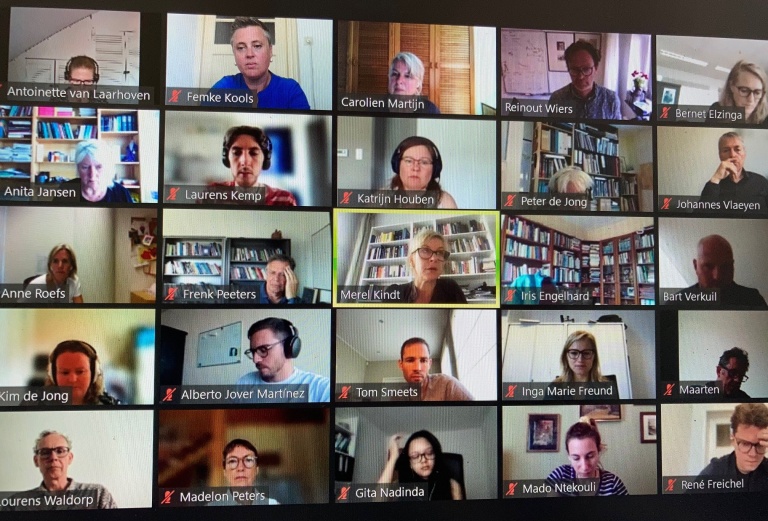Yesterday, a large part of the NSMD consortium travelled to the future: it's 2030, the project is over and you are a treating psychologist, the proposition was. What do you need to treat your patients based on a tailor-made symptom network?

This time, the organisation of the regular NSMD network meeting was in the hands of 'Maastricht'. Anita Jansen, Anne Roefs and Carolien Martijn opted for an 'old fashioned' online meeting to save travel time for the group and because some of them met last week in Amsterdam for a live two-day training in network analysis.
Lively discussion
Nevertheless, it led to a very lively and fascinating discussion, first in five subgroups and then in plenary. How do you minimise the burden on the patient who has to answer questions on his smartphone? Is it possible to develop an algorithm that can assess whether a person with a certain network really needs psychotherapy or is 'just suffering from life'? "Then you could even use it as a screening tool," dreamed one clinical psychologist. Another was given the space to explain his scepticism about the validity of the networks. "I have yet to be convinced that symptom networks can form a basis for therapeutic interventions". Patient self-reporting was also a recurring interesting theme. "How useful is it to ask patients themselves which symptom they suffer from most?"
Dreams for the future
The consortium's data specialists were thinking of a machine learning component that could determine when enough data has been collected about a person to build a reliable network. "It's not easy, but it's 2030, right? Then we should be able to do it", it sounded optimistic. And since we’re dreaming about the future: a global database of millions of patients undergoing mental health treatment, who fill in questionnaires on their phones for a period of time and also provide some demographic characteristics, would be fantastic, according to the analysts. "Because if you have more information about large groups of people, you also learn more about individual patients. If we could set up an infrastructure for that, that would be a dream come true. And if we don't do it, who will?"
With once again many questions, the participants returned to the now after the three-hour session. "That is exactly the intention of these meetings," said project leader Anita Jansen afterwards. "By thinking and discussing a lot with each other, with the entire consortium, new insights and plans emerge. That is so nice!"